Low carbohydrate diets
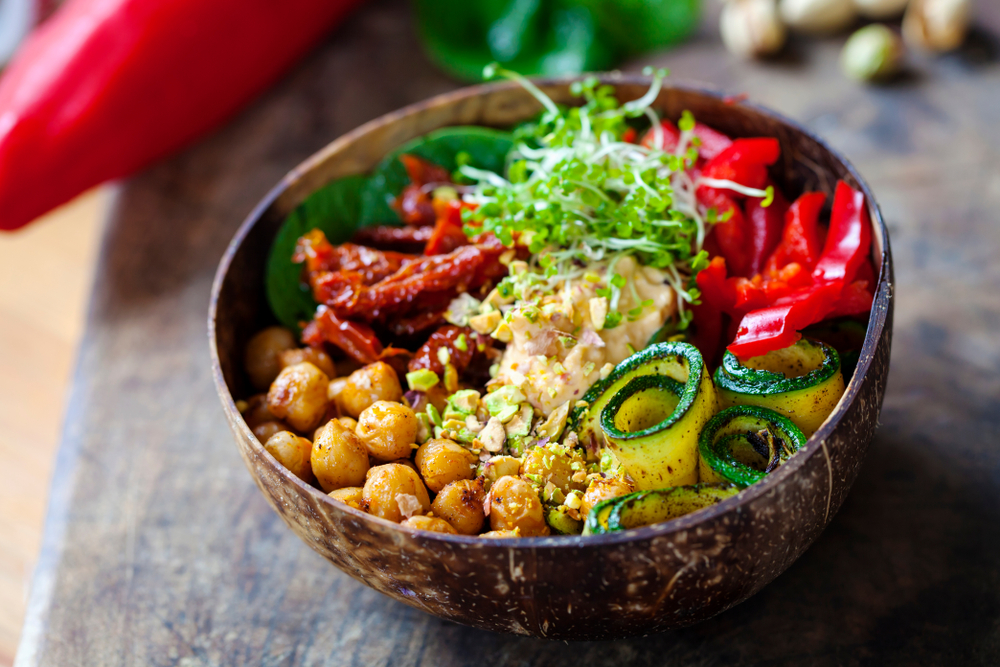
People can get mixed up between Calories and Carbohydrates; they are not the same thing. Calories are the total energy in the food which includes fats, carbs etc. Carbohydrates do contribute to total calories but are just the bit of the food that eventually breaks down into glucose.
A low carbohydrate diet is defined as eating less than 130g of carbohydrates per day. Carbohydrate breaks down to glucose in the body, so it is the nutrient that has the biggest impact on your blood glucose levels. Lowering blood glucose levels is beneficial for people with diabetes.
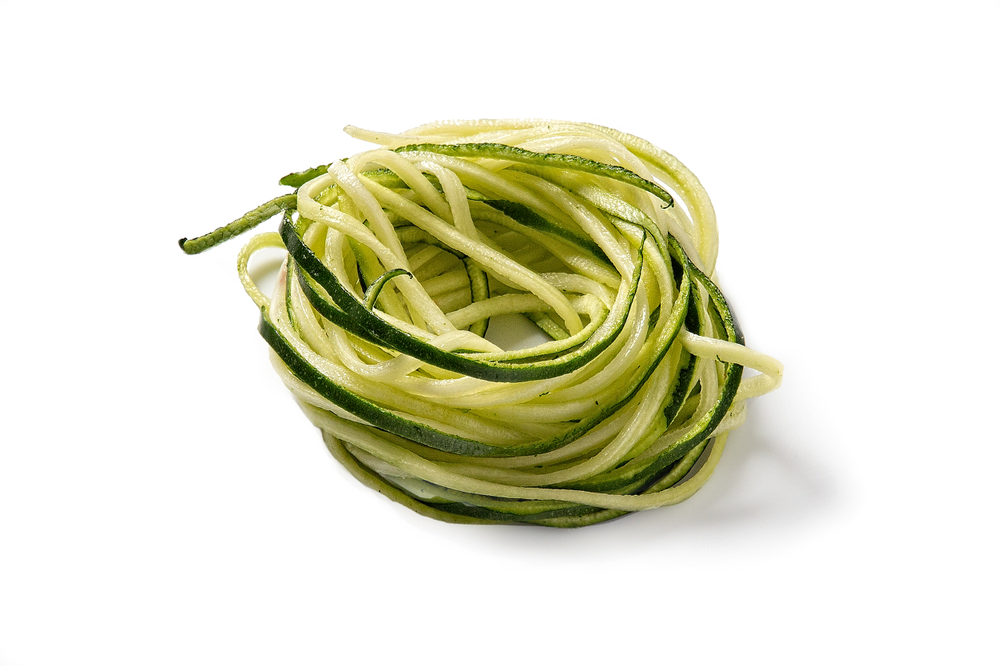
A low carbohydrate diet has helped many people with type 2 diabetes achieve remission.
They can also help people lose weight to reduce their risk of type 2 diabetes and improve their general health.
What can I eat?
The first step is to familiarise yourself with what foods contain carbs, as some foods have none (e.g. meat and fish), some have a small number of carbs (e.g. most vegetables), and others have high amounts (e.g. bread, pasta, rice and potatoes).
A low-carb diet typically involves:
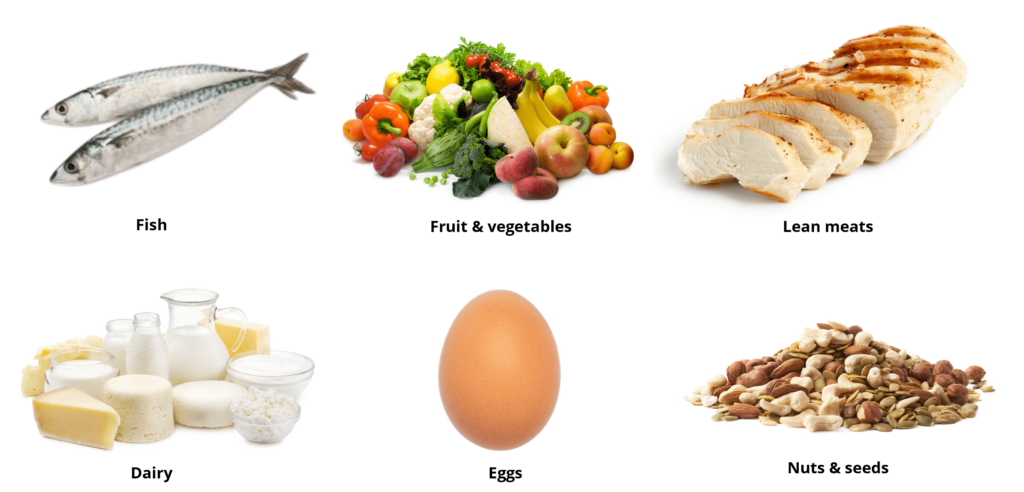
- Fruit & Vegetables: Provide our body with an important source of vitamins, minerals and fibre. Go for vegetables that are grown above the ground as they contain fewer carbohydrates. Vegetables are extremely versatile on a low-carb diet and you can replace starchy foods such as pasta with butternut squash noodles or courgetti and white rice for cauliflower ‘rice’ and broccoli ‘couscous’.
- Meat & fish: Protein is an important nutrient for the growth and repair of tissues inside the body. Increasing your intake of protein whilst reducing your intake of carbohydrates can help you feel fuller for longer whilst reducing your overall calorie intake. It’s still advised to go for lean proteins such as chicken, turkey and fish and to limit your intake of processed and red meat.
- Nuts & seeds: Our body gets a lot of vitamins and minerals from nuts and seeds. They are also a healthy source of fat which is important for heart and brain health.
- Dairy & eggs: Dairy is an important source of calcium which is essential for bone health. Try to stick to lower-fat varieties, such as reduced-fat cheese or skimmed milk, and make sure you check food labels for sugar content as things like low-fat yoghurts can actually be high in sugar.
What foods should I avoid?
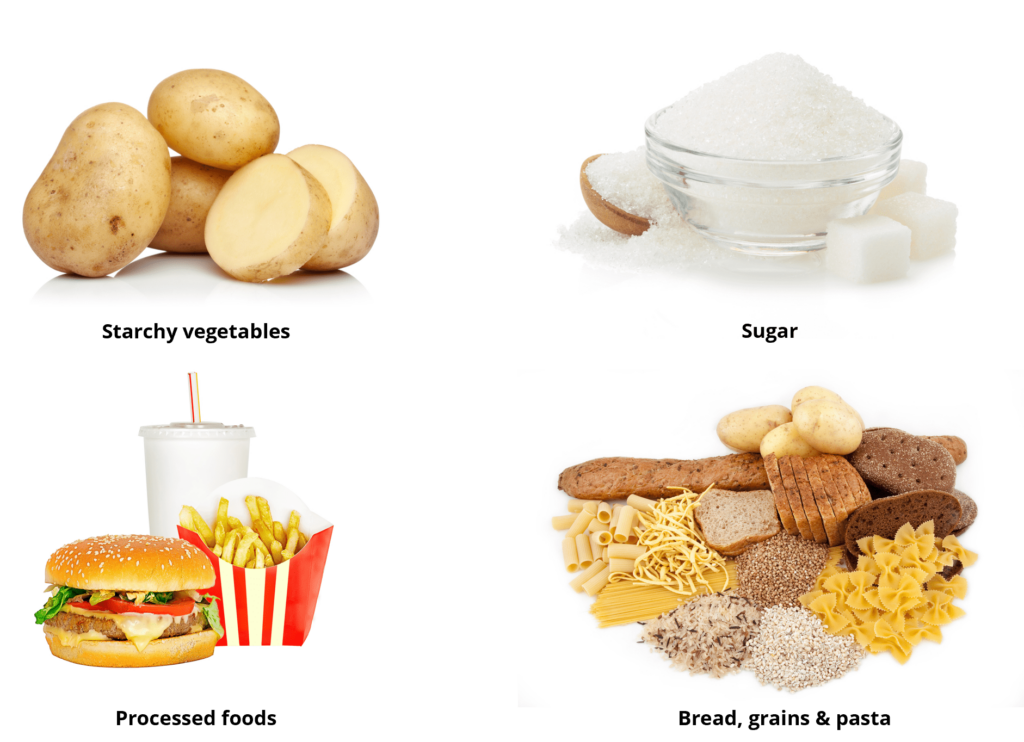
- Sugar: This includes simple sugars such as honey, table sugar and maple syrup but also any foods that contain added sugar such as sugary drinks, sweets, chocolates, ice cream, biscuits etc.
- Starchy vegetables: These are defined as those that grow under the ground or ‘root veg’ such as sweet potatoes, carrots, parsnips, beetroot and potatoes as they contain high amounts of carbohydrates.
- Highly processed foods: Foods that have been highly processed such as sausage rolls, crisps, and sausages are generally high in saturated fat, sugar and salt and offer no nutritive value so it’s best to avoid them altogether.
- Bread, grains & pasta: All of these are high in carbs, regardless of whether they’re made from refined flour or whole grains. Most grain dishes, including rice, wheat and oats, are also high in carbs so you either need to limit how much you are eating or avoid it altogether.
Food labelling
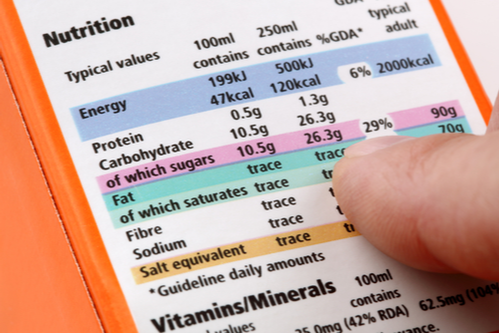
Being able to read and understand food labels is a really important part of any type of diet. When following a low carbohydrate diet, you will be looking at the nutrition label on the back of food packaging for the carbohydrate content, as only the amount of sugar will be displayed on the front as part of the traffic light food label.
Food labels tend to give you the values per 100g and per serving or weight of food, so make sure you are looking at the correct value for how much you are eating when working out the carbohydrate content.
You will see a value for the carbohydrate content, sometimes called total carbohydrate content; this is the value that you need to use when calculating your daily amounts. Underneath this figure is how much of the total carb content is sugar.

Tips for following a low-carb diet
At home
- Swap rice for cauliflower or broccoli couscous
- Instead of spaghetti, use spiralised veg such as courgetti or butternut squash noodles
- Replace tortilla wraps or taco shells with lettuce leaves
- Replace pasta sheets in lasagne with sliced aubergine
- Use portobello mushrooms as the bun when you are having a burger
- If you are used to having potatoes with your meals, replace them with more vegetables or try things such as celeriac mash or butternut squash wedges
- Instead of sugar, switch to sweeteners such as Stevia, Erythritol or Xylitol —these can be used to replace sugar in baking as well as in everyday use
- Replace wheat flour with low-carb ones made from nuts such as almond flour or coconut flour. Both of these work well in recipes for muffins, pancakes, or baked goods
- Milk from cows is quite high in carbs due to the sugar lactose so try coconut or almond milk
Eating out
- If you’re having a burger, ditch the bun
- Instead of chips or potatoes on the side, ask for extra veg or a side salad
- Wine and lagers can contain a lot of carbohydrates so it’s best to stick to clear spirits with diet mixers
- Sauces can contain a lot of hidden sugar so ask for these on the side and you can control how much you use
- Look at the menu online before going. Deciding what to eat before you sit down allows you to make a healthy informed choice
- Ask the restaurant to skip the bread basket if they normally bring one
- Eating a light healthy snack before you go out can prevent overeating at the restaurant
- A protein-based meal such as poultry, fish or meat is always a good option
- Restaurants are used to accommodating dietary needs so don’t be afraid to ask for substitutions such as swapping potatoes for steamed vegetables

You can download a guide for following a low-carb diet here.



Leave a Reply
You must be logged in to post a comment.